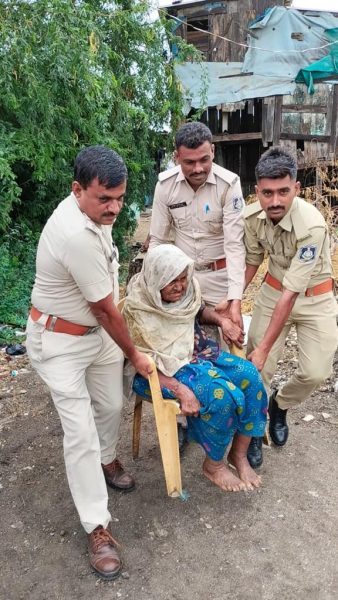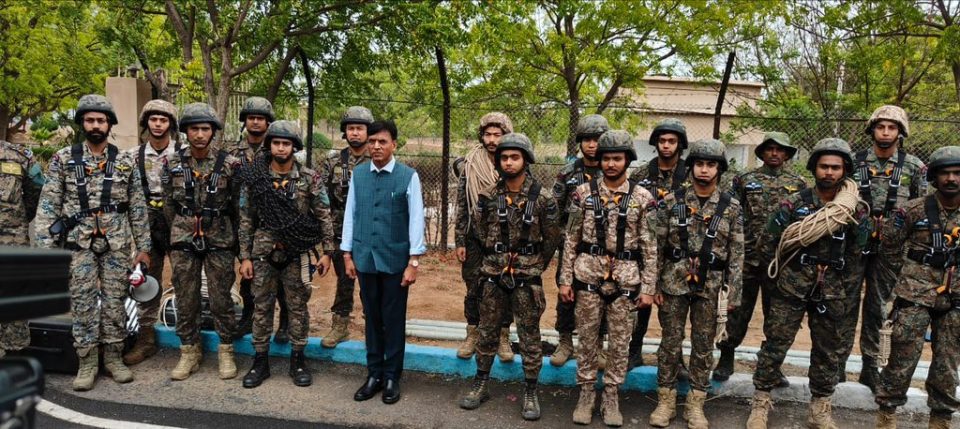
Biparjoy: Gujarat has patchy track record in cyclone management

Cyclone Biparjoy is going to be the third extremely severe cyclone to develop in the Arabian Sea in the last 58 years, as per the Indian Meteorological Department (IMD).
Biparjoy, which is said to make a landfall along Jhakhau, Kutch, in less than 24 hours, is one of the strongest cyclones to hit Gujarat since 1970. The state that has a coastline of 1,600 kilometers, the longest in the country, has been battered by 12 cyclones in the past. But, its track record in disaster management is not up to the mark.
As per the latest predictions of IMD, the cyclone has weakened and went from being ‘Extreme Severe Cyclonic Storm’ (ESCS) to ‘Very Severe Cyclonic Storm’ (VSCS) on the morning of June 14. As on 8.30 am of June 13, Biparjoy Cyclone was located 320 kms south-southwest of Porbandar, 360 kms south-southwest of Dwaraka, 440 kms south of Jakhau Port, Kutch.
Evacuation efforts
As per state government estimates, about 1.6 lakh people along coastal districts of Saurashtra and Kutch will be affected by the impact of the cyclone. So far, 46,000 people, primarily fishermen who live in the first line of housing along the sea, have been evacuated to higher ground.
Salt workers from Kutch also have been evacuated. Shelter homes have been made in temples and government offices in districts with food and water. Thirty-eight pregnant women, who are due to deliver on or before June 10 have been shifted to various hospitals along with their family.
The Indian Coast Guard (ICG) has evacuated a 50-member crew of a jack up rig – Key Singapore – off the coast of Dwarka, as a preventive measure ahead of the expected landfall of severe Cyclone Biparjoy.
Apart from paramilitary forces, army and navy have also been deployed for rescue and evacuation operations along Kutch and Saurashtra.
Also read: Cyclone Biparjoy expected to cause heavy damage; IMD issues red alert

Union Ministers from Gujarat – Mansukh Mandviya, Darshana Jardosh and Purushottam Rupala – have been tasked to be on the ground in three districts that is said to have the worst impact – Kutch, Dwarka and Porbandar.
Three casualties in Kutch and Saurashtra
Until now, there have been three casualties in Kutch and Saurashtra and electricity has been cut off in various places where heavy rains and high speed wind are being experienced since last night.
In a statement made on June 13, Alok Pandey, relief commissioner of Gujarat said, “Rainfall has started in districts. So, for the purpose of communication, satellite phones, ham radios and intra circles systems have been put in place.”
“Out of the target of 55,000 people, 46,000 have already been evacuated and shifted to safer areas,” he added.
The Cyclone Preparedness Response Plan
The Gujarat State Disaster Management Authority (GSDMA) came up with The Cyclone Preparedness Response Plan in the year 2014. The objective of the plan is to protect and minimise the damage to lives and properties due to cyclones.
The revenue department is primarily responsible for emergency response and relief in the state, the GSDMA is designated as the nodal agency for formulation of policies, long-term planning, coordination and monitoring body for mitigation, reduction and preparedness for disasters.
The responsibility for initiation and execution of emergency preparedness and response measures before, during and after the cyclone rests with the Commissioner of Relief in coordination with other departments.
Also read: Cyclone Biparjoy expected to cause heavy damage; IMD issues red alert
The concept has been developed to define different levels of disasters in order to facilitate the responses and assistances to districts, while specifying if the disaster can be managed at the district level. However, the state and Centre will remain on standby to provide assistance if needed.
The cyclone response structure will be activated on the receipt of cyclone warning by the IMD. The occurrence of a cyclone may be reported by the IMD to the Commissioner of Relief or GSDMA by the fastest means. Following which, emergency response teams and control rooms shall be established. Once the situation is normal and under control, the relief officer decides if the emergency workers can be called back.
Cyclone preparedness and toll in Gujarat as compared to Odisha
However, the number of casualties and loss to properties have been high in Gujarat as compared to other coastal states that frequently experience cyclones. For instance, Odisha that has one of the robust disaster preparedness mechanisms, has established an Early Warning Dissemination System (EWDS) with last-mile connectivity.
Two coastal villages, Venkatraipur in Ganjam and Noliasahi in Jagatsingpur district respectively, were declared as “tsunami ready” by UNESCO’s Intergovernmental Oceanographic Commission (IOC), making India the first country in the Indian Ocean Region to establish such a high level of disaster preparedness.
While casualties in Gujarat have remained in hundreds during a cyclone, it has gone significantly down in Orissa. During the super-cyclone in 1999 in Orissa, the death toll was 10,000. In 2013, cyclone Phailin claimed 21 lives, and only two people died in cyclone Hudhud in 2014. In 2021, cyclone Yaas was the latest major cyclone to hit Orissa in which the death toll was contained at just three.
List of severe cyclones to hit Gujarat in the past and its impact:
October 1975
Landfall location- 15 kilometer north west of Porbandar
Impact – 85 dead, damage to property estimated at ₹750 million
June 1976
Landfall location – along the coast of Saurashtra region
Impact – 70 dead, 51 villages badly affected, 25000 houses damaged, 4,500 cattle lost, damage to property estimated at ₹30 million
November 1981
Landfall location – West of Veraval and Porbandar
Impact – 13,942 animals dead, 8,686 huts and 6,034 houses damaged; 1.18 square hectare area of crops damaged with a loss of ₹836 million. One ship sank off Veraval coast
November 1982
Landfall location – 5 kilometer west of Veraval coast
Impact – 544 dead, 2 million animals dead which is a loss of approximately ₹125 million, 60,000 huts collapsed, 45,000 houses collapsed, 2,800 km of roads damaged with a loss of about ₹356 million loss, 70 dams affected with a loss of about ₹175 million, 2530 settlements deprived of power, 1359 fishing vessels damaged; Port loss estimated to be ₹19.1 million; agriculture and orchards loss estimated to be ₹1,050 million
June 1996
Landfall location – UT Diu
14 people died, 1611 houses damaged
June 1998
Landfall – North of Porbandar
Impact – 1173 people died, 1774 missing. Losses estimated at ₹18.65 billion
May 20 1999
Landfall – Between Gujarat and Pakistan international maritime border
Impact – 453 died, 5153 buildings damaged and estimated loss to property is ₹800 million

